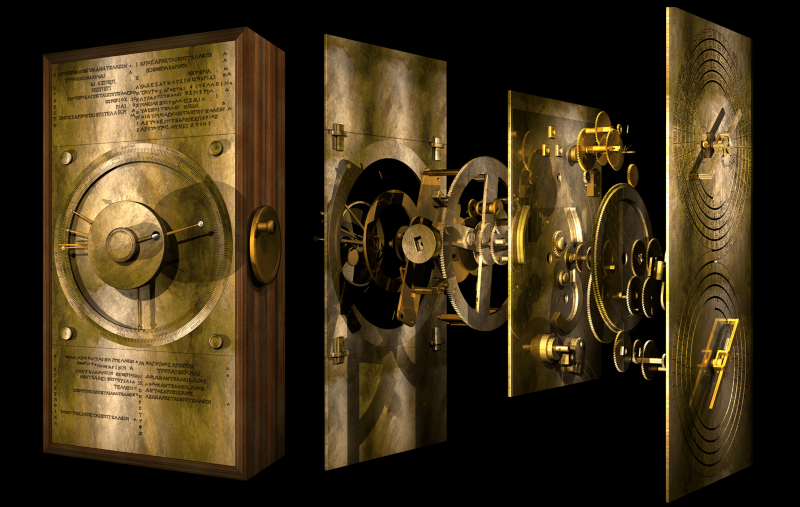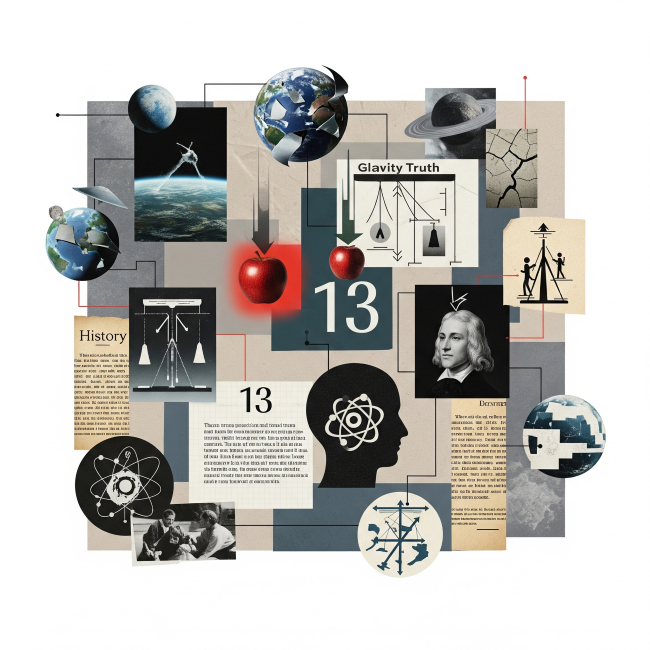The Antikythera Mechanism: Greece’s Ancient Computer

In 1901, a group of sponge divers exploring the waters near the Greek island of Antikytherasurfaced with a strange discovery. Alongside statues, amphorae, and jewelry recovered from an ancient shipwreck was a corroded lump of bronze that seemed at first no different from the other detritus of antiquity. Yet when it broke apart, gears and inscriptions peeked through the encrusted surface. What appeared to be nothing more than a barnacle-clad relic would come to be recognized as the world’s first analog computer. The Antikythera mechanism, as it is now called, has transformed our understanding of ancient technology and raised unsettling questions about what civilizations once knew and then forgot.
A Machine Out of Time
Image Credit: Wikipedia
Dating to around 150–100 BCE, the mechanism was a device of extraordinary precision. Its gearwork, reconstructed after decades of study, could predict eclipses, chart the positions of the planets, and model the irregular orbit of the Moon. To the casual eye, it resembles a shoebox filled with a cluster of bronze wheels, each tooth cut with mathematical care. In function, however, it performed tasks that would not be replicated in Europe for another 1,500 years.
What makes the Antikythera mechanism so haunting is not only its ingenuity but also its isolation. We have no record of similar devices from antiquity. It seems to emerge fully formed, then vanish from the historical record. Scholars ask: was it a unique invention, perhaps the masterpiece of a lone savant, or part of a broader tradition of mechanical knowledge now lost?
The Mystery of Its Origins
The inscriptions on the mechanism, written in Koine Greek, suggest that it may have been constructed in a workshop linked to Rhodes, an island known for its astronomical schools. Some have speculated a connection to Hipparchus, the great astronomer who lived on Rhodes during the second century BCE. Others point to Archimedes, whose mechanical genius was legendary, though he lived a century earlier. Whoever built it, the device reflects a culture deeply invested in marrying mathematics, astronomy, and craftsmanship.
The ship that carried it, likely bound for Rome, may have been transporting treasures looted from the eastern Mediterranean. If so, the mechanism could have been plundered from a wealthy patron’s collection or a scholarly center, intended as a gift or as spoils for display. Its sinking froze it in time, protecting it beneath the sea for millennia until its accidental rediscovery.
Modern Reconstructions
Image Credit: Wikipedia
For decades, the Antikythera mechanism remained an enigma. Early scholars compared it to an astrolabe, others to a navigational tool. Only with the advent of modern imaging techniques in the late 20th century did its true nature emerge. Using X-ray tomography, researchers could peer inside without destroying it, revealing the complex interlocking gears and inscriptions hidden within the corroded fragments.
Today, several working reconstructions exist. They show a hand-cranked machine with dials on the front and back. Turn the crank, and the Sun, Moon, and planets move across the dial in their cycles. A calendar wheel ticks forward. A spiral dial marks the223-month Saros cycle of eclipses. Another dial predicts the timing of Olympic Games. What looks like a jumble of wheels is in fact a compact model of the heavens, built not for ornament but for demonstration and prediction.
What It Means for History
The existence of the Antikythera mechanism forces us to rethink the boundaries of ancient science and technology. We often imagine classical antiquity as an age of philosophy and geometry, abstract thought without machines. The device reveals a different picture. Here was a tool that combined theory with engineering, cosmology with craftsmanship. It shows that the ancients did not merely contemplate the heavens; they built machines to simulate them.
It also complicates the story of technological progress. We tend to view history as a linear march, each discovery building inevitably upon the last. Yet here is evidence of advanced mechanical computing that was lost for centuries. The fall of Rome, the decline of Mediterranean trade, and the fragmentation of knowledge meant that such devices were not preserved. Only in the Renaissance, with the development of geared clocks, do we see similar precision mechanics reemerge.
Lessons from a Forgotten Future
The Antikythera mechanism is a reminder of the fragility of knowledge. A single war, a shipwreck, or a break in the chain of transmission can consign entire technologies to oblivion. The ancient Greeks may have glimpsed the potential of mechanical computation, but history chose another path. We marvel at their insight today only because the sea preserved what time and empire did not.
And yet, the story is not entirely one of loss. The rediscovery of the device in modern times underscores the human capacity to piece together knowledge across centuries. The same curiosity that drove Greek astronomers to track the heavens drives scientists today to reconstruct their work. Each gear tooth, each inscription, is a dialogue across time.
Conclusion
Image Credit: Wikipedia
To study the Antikythera mechanism is to be humbled. It is not merely an artifact; it is a question mark cast into history. How much do we not know about what has been forgotten? What hidden achievements lie beneath the waves or buried in the earth, waiting for their moment to disrupt our tidy timelines?
In the end, the device is both machine and metaphor: a model of the cosmos, and a symbol of civilization’s own cycles of knowledge and loss. It reminds us that progress is neither smooth nor guaranteed. What was once achieved can be forgotten, and what was once lost can sometimes be found again.
Cover Image Credit: Leventis Foundation
You may also like...
Arsenal Legend Thierry Henry to Receive Prestigious BBC Lifetime Achievement Award

Former Arsenal and France football legend Thierry Henry will be honored with the Lifetime Achievement award at the 2025 ...
Maresca's Emotional Rollercoaster: Chelsea Boss Claims 'Happy' After 'Worst 48 Hours'

Chelsea boss Enzo Maresca has clarified his previous 'worst 48 hours' comments, now expressing happiness and a deeper co...
Fallout Season 2 Shatters Records, Outperforming HBO's Last of Us!

Fallout Season 2 has premiered on Prime Video to overwhelmingly positive critical and audience reception, scoring a near...
Winter Is Back! Kit Harington Hints at Massive Game of Thrones Comeback

Kit Harington has definitively shut down any possibility of reprising his role as Jon Snow, stating he doesn't want to g...
Love Blossoms: Anwuli & Kennedy's Instagram Romance Leads to #HappilyEverOffor!

Anwuli and Kennedy's love story, sparked by an Instagram connection, led to a beautiful Igbo traditional wedding. After ...
Teyana Taylor & Lucien Laviscount Light Up the 'Spirit Tunnel' with Epic Dance Moves!

The Jennifer Hudson Show features high-energy 'Spirit Tunnel' entrances, with Lucien Laviscount making a stylish walk an...
Kenya's Billion-Shilling Travel Bill: Austerity Pledge Broken?

The Kenyan government spent nearly Sh5 billion on travel in the first three months of FY 2025/26, raising concerns about...
Shehu Sani Urges Nigerians: Shun US Travel Ban, Build Nation

The United States has enacted new travel restrictions impacting Nigerian nationals, covering both immigrant and several ...
.png&w=1920&q=75)






